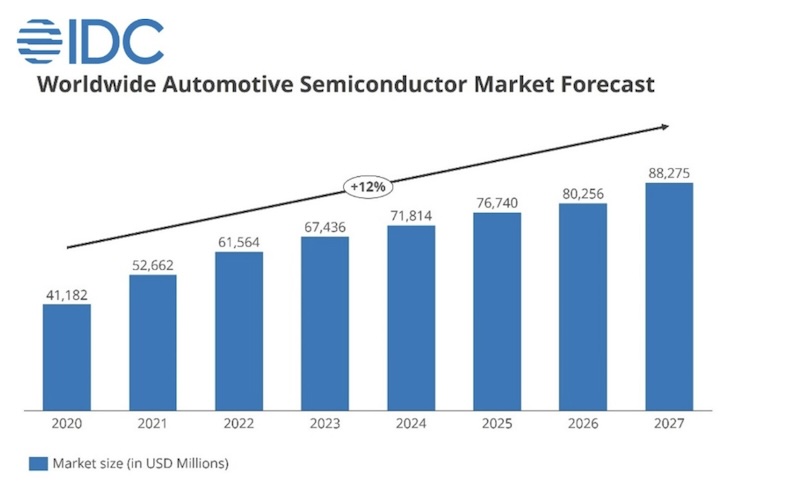According to IDC’s Worldwide Semiconductor Automotive Ecosystem and Supply Chain, IDC expects unprecedented growth in the global automotive semiconductor market as the automotive sector progresses toward digitalization and intelligence. IDC predicts escalating demand for semiconductors such as high-performance computing (HPC) chips, image processing units (IPUs), radar chips, and lidar sensors along with the popularity of advanced driver assistance system (ADAS), electric vehicles (EV), and Internet of Vehicles (IoV). These technological advancements enhance automotive safety and bring new growth opportunities for the semiconductor industry. According to IDC, the demand for automotive semiconductors will rise substantially in the coming years.
Globally, the vehicle emission restrictions and supportive policies for new energy vehicles by governments around the world have further fuelled the market demand for EVs and hybrid electric vehicles (HEVs). Particularly in China, Europe, and North America, stringent environmental standards and policy backing are propelling rapid development in this field.
“The worldwide automotive semiconductor market revenue will surpass US$8.5 billion by 2027. The compound annual growth rate (CAGR) for the 2023–2027 period will reach 7%,” noted Adela Guo, Research Director, IDC Asia/Pacific.
Overall, the automotive semiconductor market is projected to sustain robust growth impetus with the increasing popularity of EVs and the advancement of automotive technology. This trend presents unparalleled opportunities for semiconductor manufacturers, prompting them to map out new developmental pathways and invest in technological innovation and capacity expansion.
Automotive semiconductor technology is crucial for multiple applications. High-performance chips in autonomous driving enable real-time perception and decision-making through advanced data processing for sensors, cameras, and radars. In smart cockpits, semiconductors power high-resolution displays, speech recognition, and touchscreen interfaces, improving comfort and interaction. For powertrains, they manage motor control and energy efficiency in EVs and HEVs. Additionally, semiconductors enhance safety and control in chassis and body systems through support for ADAS and stability controls. These advancements boost vehicle performance and user experience and drive significant growth in the semiconductor market.
“Among the multiple use cases, the segments of smart cockpits and autonomous driving have experienced the most rapid growth, with forecasts showing that they are poised to secure over 50% of the market share by 2027,” highlighted Adela Guo.
With the sustained penetration of use cases, the maturity of 5G communication technology, and the promotion of IoV, the application of semiconductors in automobiles will be more extensive and profound. In the future, the automotive semiconductor market will witness breakthroughs in technological innovation and cost control and act as a key driver in catalyzing the transformation of the automobile industry by addressing the continuously upgrading needs for safety, comfort, and environmental protection.

